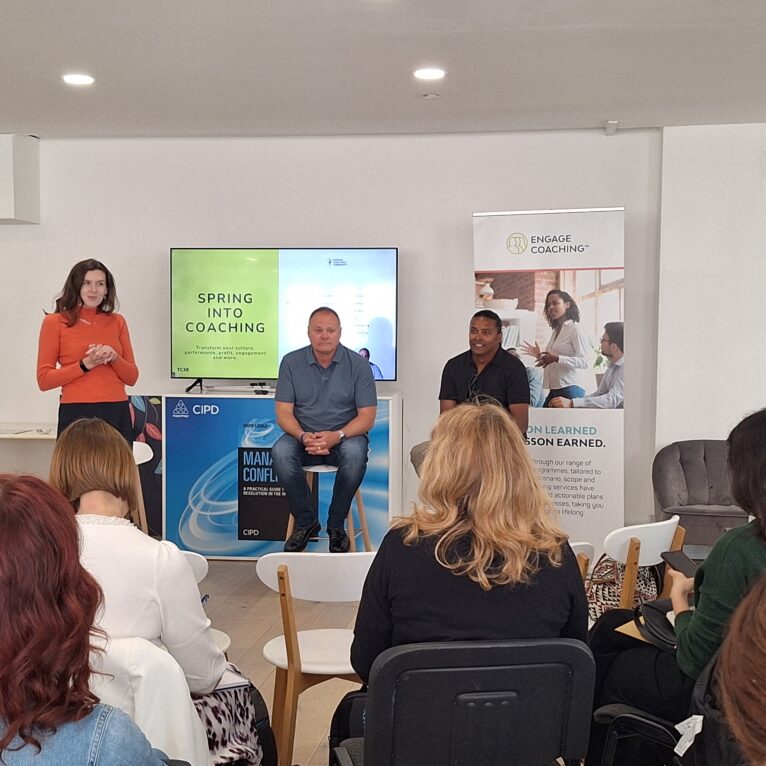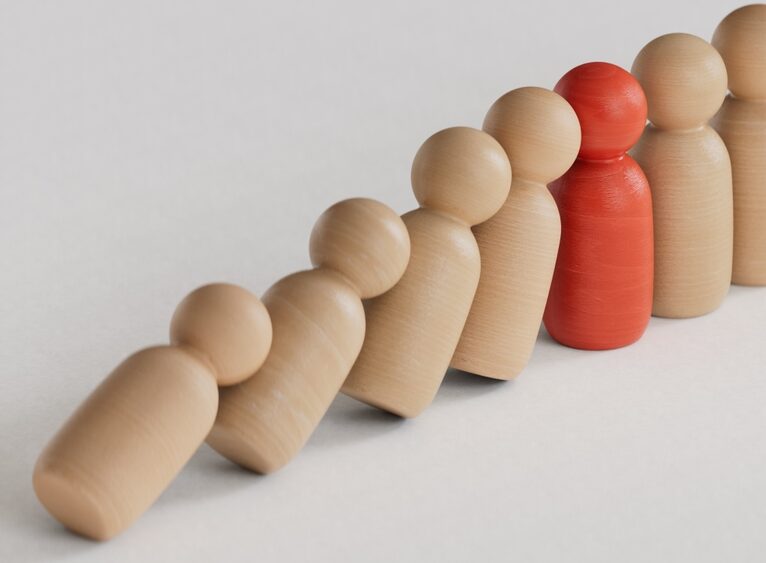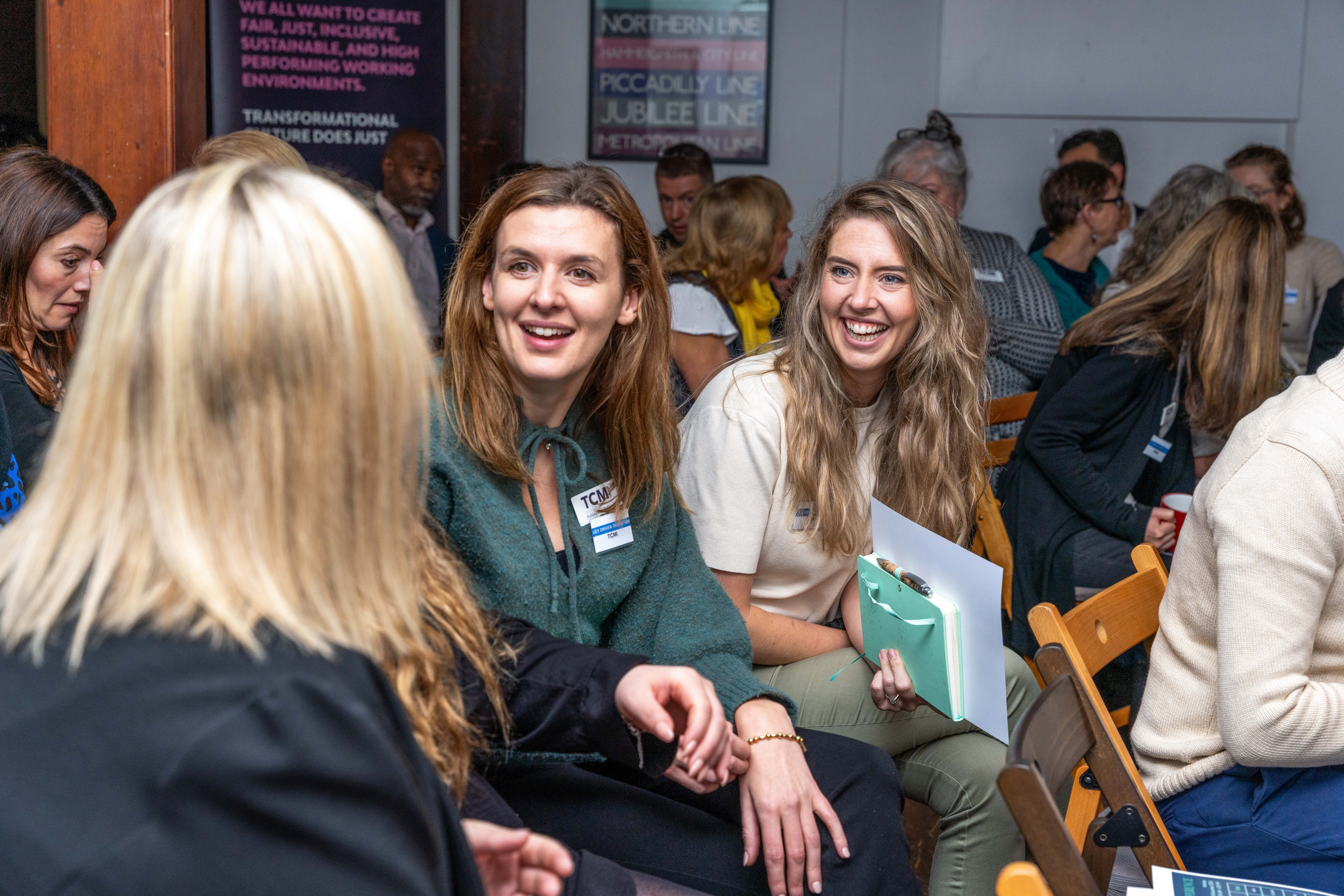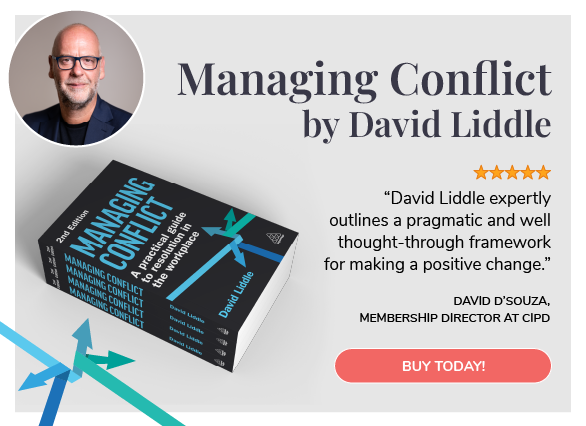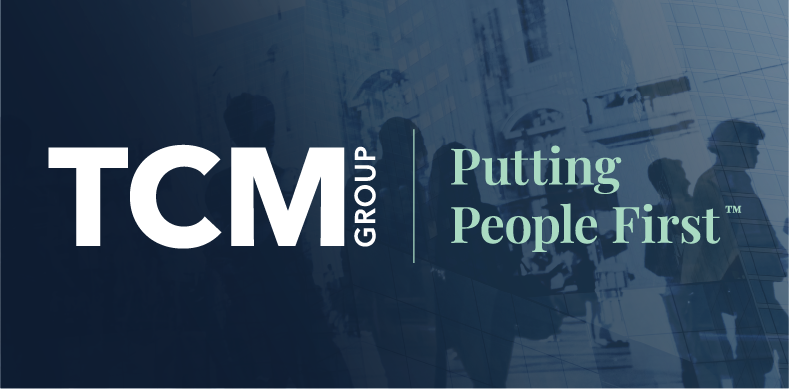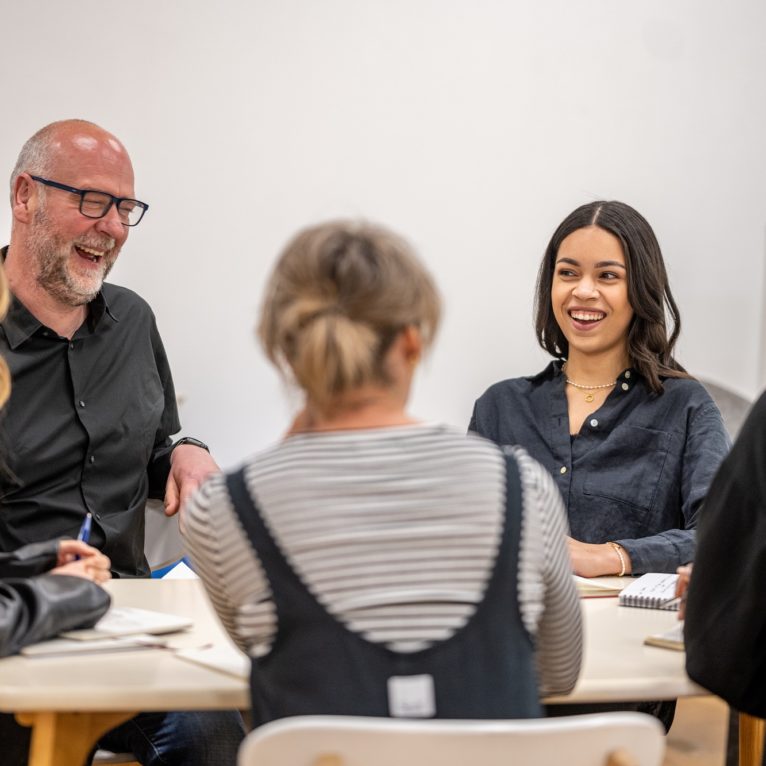
Share article:
Tags:
For many years now, creativity has been heralded as one of the ‘must have’ management skills in the corporate arena. As far back as 2010, just after the global financial crash, 1,500 Chief Executive Officers from over 60 countries and 33 industries took part in an IBM study. They ranked creativity as the number one skill in helping their companies navigate a challenging business environment characterised by several large-scale and volatile shifts. Sound familiar? More recently, the Future of Jobs Survey published by the World Economic Forum placed innovation, creativity and originality amongst the top 5 skills that will be required for 2025. As the UK heads into a long recession and companies battle with a whole host of challenges at both the macro and micro levels, it’s not surprising that employers are looking for a good dose of ‘magic’ to find fresh solutions to a myriad of tricky problems.
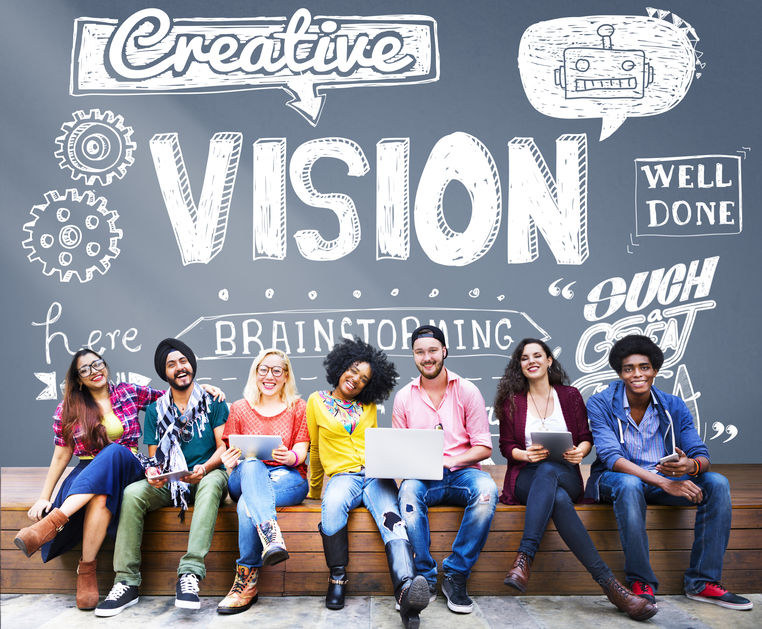
And there is also little doubt that collaboration will continue to be a core ingredient in the creative process. Although the world will always be privileged to witness examples of outstanding creativity performed by extraordinary individuals working solo – think Albert Einstein, Picasso, JK Rowling, Elon Musk, teams of three, four, five people or more working together in close harmony will always have a better chance of solving a challenge creatively and successfully. Iconic pop bands, all-conquering sports outfits, crack military units and successful teams in the business arena more often than not succeed by being the sum of their parts, maximising the strengths of each and every team member, seeking out and celebrating diversity.
The mental wellbeing bonus
And here’s the bonus in the pack. Not only is collaborative creativity good for the financial health of the business but it’s also beneficial for the mental health of every individual. Here are three reasons why:
- Meditation Plus: When you are creative, your brain enters a state of flow and becomes totally absorbed by what you are doing. It’s like meditation, mindfulness or yoga, but better, because you have something tangible to show for it!
- Dopamine feel good factor: Whenever we find ourselves engrossed in any creative activity, the reward centres in our brain release dopamine; it’s this chemical surge that boosts your mood. Dopamine, sometimes referred to as the feel-good chemical, is a neurotransmitter which acts as a natural antidepressant. When we engage in creative pursuits and the neurons in our brain start firing, we receive positive re-enforcement. So not only does being creative feel good at the time, but our brains are also essentially telling us to keep going. More of the same please!
- Socialising: When the creative process is executed collectively, it becomes an easy, effective and entertaining way of staying connected with others……as well as being good for your mental state of mind. It lightens your mood, makes you feel happier, sharpens your memory and cognitive skills and promotes a sense of wellbeing and security.
So what’s the problem?
Why is Collaborative Creativity or Creative Collaboration still proving to be the exception to the rule in the corporate environment? Why is it so elusive? What’s getting in the way?
In 2020, GENIUS YOU carried out a study involving over 2000 respondents from 17 multi-nationals across 10 sectors. The study analysed information extracted from a psychometric survey completed by respondents in the period between 2015 and 2020. The survey explored the creative strengths and characteristics of individuals. Were they at the more generative, expansive end of the creative process, characterised by the Explorer and the Detective? Or were they at the evaluative, decision-making end of the creative spectrum, characterised by the Judge? The results were conclusive.
31% of respondents scored highest as the logical, analytical Judge character – making this the dominant behaviour. This compared with 21% for the Explorer, the generator of ideas, and only 9% for the Detective, the spotter of ideas with potential. So, why is the more judgmental, analytical mindset dominating the more expansive and exploratory one? Is it a product of our education system? Are we knocking that child-like curiosity and ‘can do’ attitude out of people in their formative years?

Or maybe ‘Judges’ are what companies are looking for when they recruit individuals? Do employers view commercial rigour as a more important competency than creative flair? Alternatively, are the realities and pressures of day to day work just not conducive to the more exploratory, experimental front end of the creative process. Is there simply not the time available for Explorers and Detectives to weave their magic in the workplace because they find themselves under constant pressure to deliver the nitty gritty agenda of the day?
But the report went even deeper than the numbers. It investigated the underlying reasons why and unearthed a number of key themes underpinning the shift away from the exploratory, ‘let’s create’ mindset. The identified blockers included the usual suspects like ‘time poverty’, ‘process overload’ and a reluctance to ‘broaden horizons by looking outside the office’. However, by far and away the most dominant theme was a lack of ‘internal sharing and cross pollination’. Almost 23% of all comments made in the surveys fell in this camp. This is a verbatim quote from one of the respondents that points towards the problem as well as the opportunity. “As there are so many teams all working on different projects with different outcomes, it would be more beneficial to do more sharing between teams to help nurture new ideas and inform decisions.”

So, in summary, it seems like a few things are getting in the way of Collaborative Creativity, ranging from the way in which people are recruited and then managed and the pressurized conditions within which they are being asked to work.
Therefore, what’s the solution?
When Covid-19 came along everything changed in terms of the way we all worked. Now that it seems to have departed from our shores, we are presented with a once in a generation opportunity to take stock and re-evaluate the way in which we would like to spend our working hours for the benefit of both companies and workers. The scene is set for collaborative creativity to take its place at the corporate table!
Here are three suggestions I would make:
- Prune your processes. Take a good, hard look at all the processes in place and work out which ones really add value to the business. If they don’t add sufficient value to merit a place within the business infrastructure then prune back hard. It’s unlikely that anybody is going to complain about not having to fill in a template or two. The net effect of a hard “process prune” is that all of a sudden, the clutter will begin to clear away, and companies will start to enjoy a strong sense of catharsis. It will be that same feeling gardeners get when, as part of the autumn sweep, all the weeds are dug up, the lawn is given its final trim, and all the dead leaves are disposed of. The garden is given the equivalent of a short, back and sides and you are gifted with the space to create when spring returns. Creativity requires its own equivalent of an autumn sweep or a spring clean.
- Allocate some freed-up time to the creative process. The danger of process pruning is that any time that gets released is quickly sucked up by more processes, more template-filling and further bureaucracy. The same thing happened when the pandemic took away
 the burden of the daily commute for many of us. The two or three hours a day which suddenly became available were often hijacked by an influx of back to back Zoom or Teams calls. The demands of the here and now always seem to trump the needs of tomorrow and beyond. Short-termism always beats long-termism. It’s important, therefore, that senior leaders have the courage to ring-fence a proportion of the time for the creative process, and it’s equally important to understand that the creative process doesn’t always operate in a straight line. It’s iterative. It stops, it starts, it reverses, it fast forwards, it stalls. It requires permission to be beautifully inefficient.
the burden of the daily commute for many of us. The two or three hours a day which suddenly became available were often hijacked by an influx of back to back Zoom or Teams calls. The demands of the here and now always seem to trump the needs of tomorrow and beyond. Short-termism always beats long-termism. It’s important, therefore, that senior leaders have the courage to ring-fence a proportion of the time for the creative process, and it’s equally important to understand that the creative process doesn’t always operate in a straight line. It’s iterative. It stops, it starts, it reverses, it fast forwards, it stalls. It requires permission to be beautifully inefficient. - Work out when and where people are at their creative best. Hybrid working really should be seen as a gift from the corporate heavens if companies are serious about fostering a culture of creativity. Some people’s creative juices flow strongest when they are surrounded by humanity and the hurly burly of the office environment. Others when they are locked up in their spare room at home, left in peace and quiet. Some parts of the creative process benefit from a bunch of diverse individuals collaborating face to face to generate ideas. Other parts of the process require just one or two people to focus single-mindedly on a task at hand without the involvement of others around them. By embracing the concept of hybrid working, we can decide where it is best for who to do what and when. It is certainly not the right thing to suggest that everybody must return to the office on a full-time basis, something the Government were very keen to promote as the pandemic began to recede. Equally so, working at home forever is certainly not the answer. Mixing and matching must be the way ahead.
- Identify the creative strengths of every individual. In order to understand where and how people can best contribute to the creative process, you first need to be clear what the building blocks of any creative process are and how they should interact with one another.
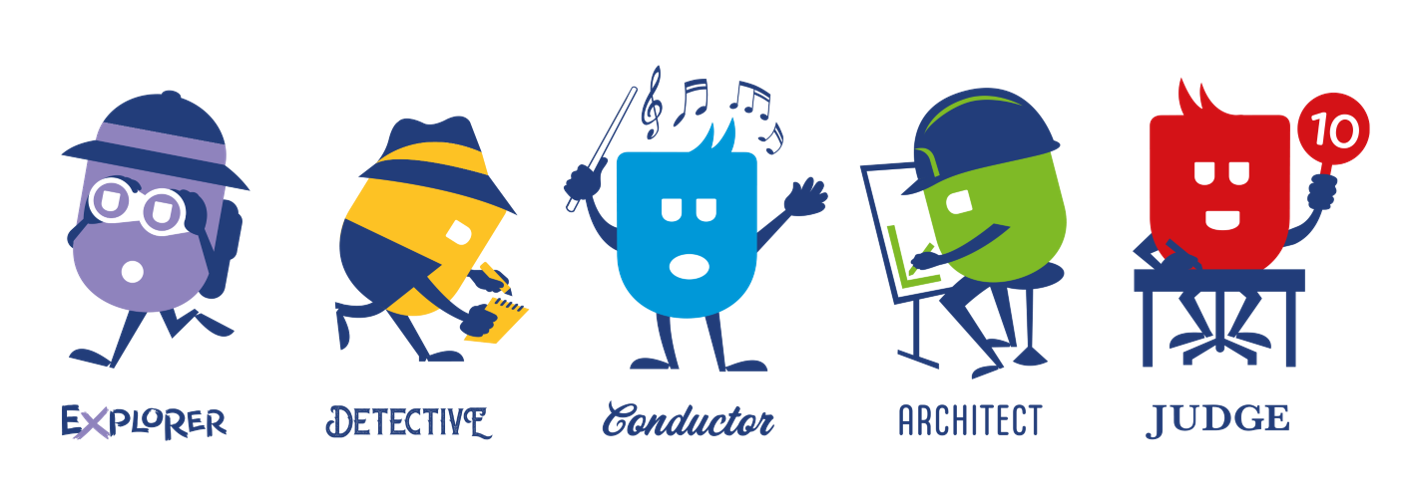
There are five characters each representing a different behaviour which should underpin any creative process. The Explorer is responsible for generating all the initial ideas which effectively feed the creative process. Forever stretching the boundaries, their goal is to produce as much early stimulus as possible. The Detective loves nothing more than investigating all the stimulus generated, making connections, looking for patterns and identifying the Big Idea with potential. The Architect’s skill is to take this Big Idea and develop it further still, making it more concrete and tangible and communicating it clearly for the benefit of others.
The Judge can then then asses the pros and cons of the candidate Big Idea(s) to help the team decide which one(s) should progress further. And finally, the Conductor is the character responsible for squeezing every ounce of creative juice both from the people and the process.
These 5 behaviours make up the end to end creative process and each individual in the team will often be strong in one or two of them.
In summary…
Companies have talked up the importance of creativity as a core management skill for a number of years. But I strongly believe that there is a need, now more than ever, to walk the walk as well as talk the talk. We find ourselves in unprecedented times when we simply can’t afford to rely on the ‘same old ways of working’ to come up with the ‘same old solutions’. However, if we want to give creativity the opportunity to flourish in the corporate environment, we need to do four things. Firstly, get rid of the processes that are not really adding any value. Metaphorically speaking, prune hard or even remove those “plants” that are taking up too much space in the corporate garden. Secondly, ringfence some of this freed-up time for the creative process. Remember that the latter demands the former. Thirdly, embrace the hybrid-working revolution, and identify where and when each individual performs at their creative best. And finally, make sure that everyone understands the mechanics of creativity, how the 5 behavioural building blocks interlock with one another and identify who is good at what.
You will then give yourselves a fighting chance of making collaborative creativity more than just an interesting academic concept!
For more information about how to foster a climate of collaborative creativity in your business, contact mark@geniusyou.co.uk
For more information around training up your teams to foster and embody collaboration, contact our Engage Leadership Coordinator Amy Thurstan here.
 the burden of the daily commute for many of us. The two or three hours a day which suddenly became available were often hijacked by an influx of back to back Zoom or Teams calls. The demands of the here and now always seem to trump the needs of tomorrow and beyond. Short-termism always beats long-termism. It’s important, therefore, that senior leaders have the courage to ring-fence a proportion of the time for the creative process, and it’s equally important to understand that the creative process doesn’t always operate in a straight line. It’s iterative. It stops, it starts, it reverses, it fast forwards, it stalls. It requires permission to be beautifully inefficient.
the burden of the daily commute for many of us. The two or three hours a day which suddenly became available were often hijacked by an influx of back to back Zoom or Teams calls. The demands of the here and now always seem to trump the needs of tomorrow and beyond. Short-termism always beats long-termism. It’s important, therefore, that senior leaders have the courage to ring-fence a proportion of the time for the creative process, and it’s equally important to understand that the creative process doesn’t always operate in a straight line. It’s iterative. It stops, it starts, it reverses, it fast forwards, it stalls. It requires permission to be beautifully inefficient.
